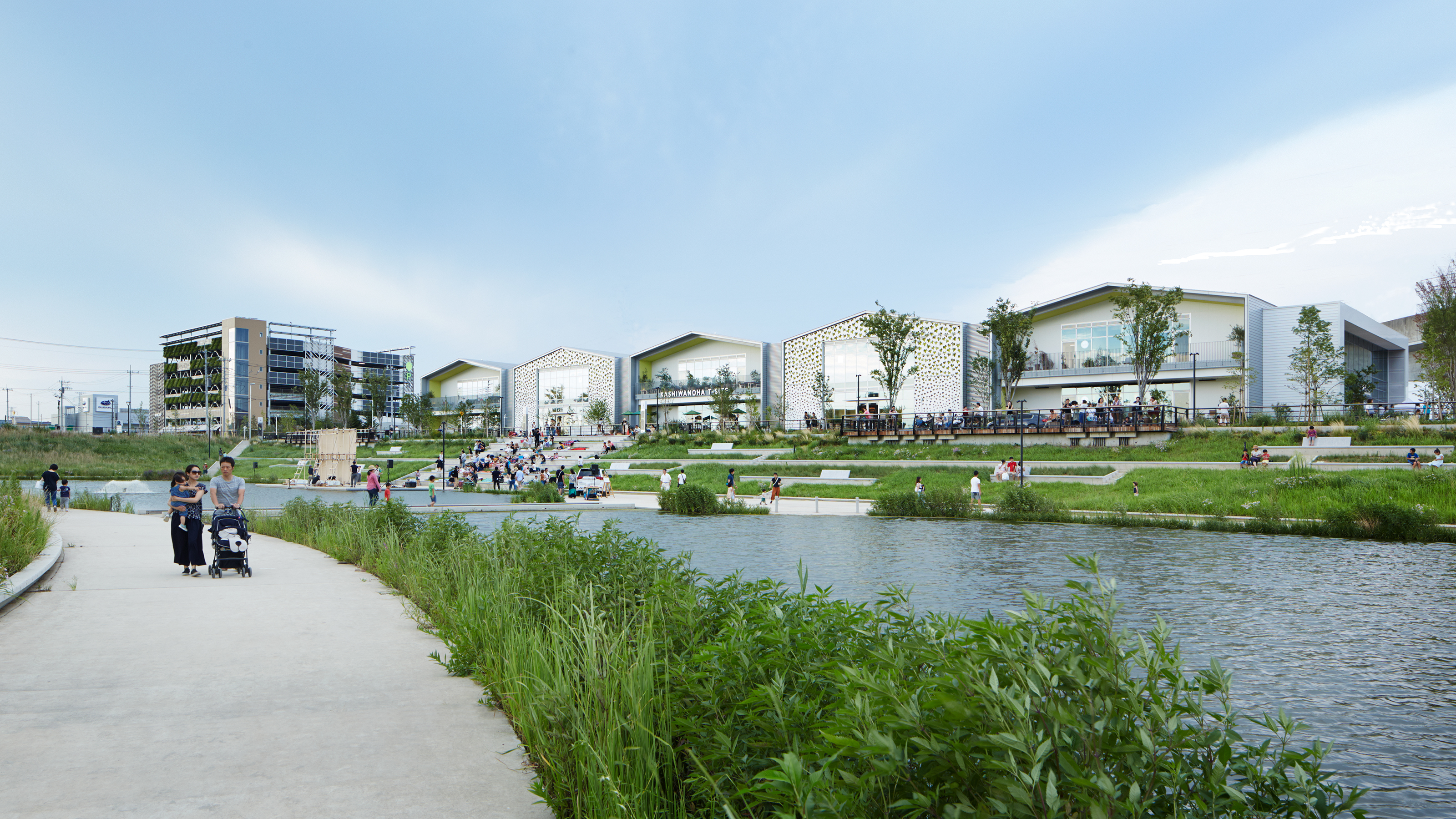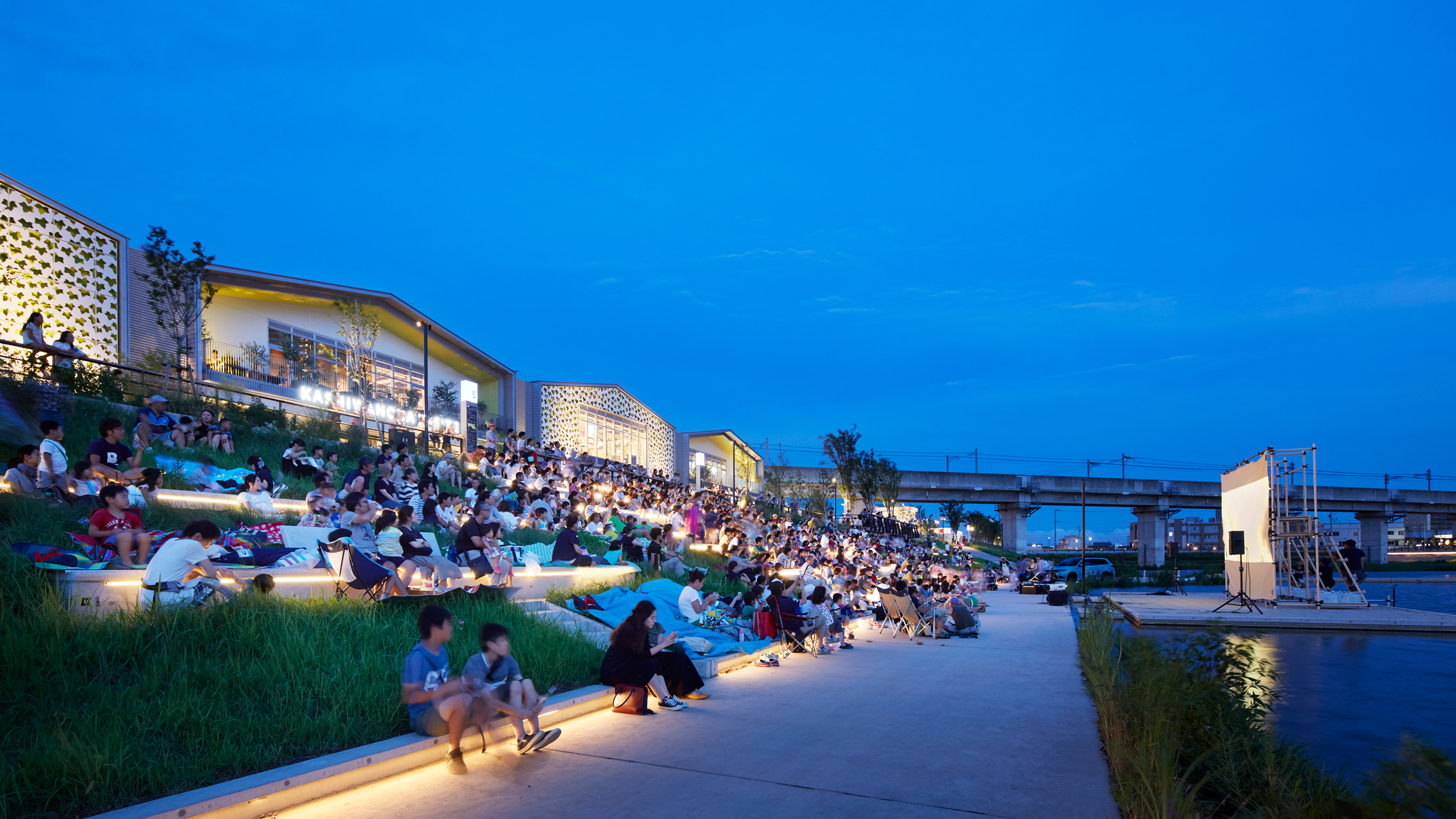The Power of Landscape Design to Enrich the Community
Transforming urban infrastructure into space for people
Scroll Down
Following the end of World War II, Japan's urban infrastructure assets were rapidly developed using standard designs in order to speedily secure function and quantity. Due to this urgency, governments found it difficult to dedicate time and money to design. Citizens and private companies, likewise, had little latitude to commit themselves to urban spaces (public space) and environments other than their own properties (personal space). Roads and pedestrian spaces right outside of homes were hardly what could be called comfortable, and single-function, concrete-covered structures and spaces, became omnipresent in Japan's cities, becoming known as “gray infrastructure”.
CATEGORY
RELATED EXPERTISE
RELATED PROJECTS
The center of this space is a retention pond. Once an area completely off limits to the general public, it served the sole function of storing rain water and was enclosed by a 1.8 meter high hazard protection fence. Chiba Prefecture, Kashiwa City, Urban Design Center Kashiwa (UDCK), Mitsui Fudosan, and other stakeholders came to a shared vision that enhancing the quality of the retention pond and having this space become a model for promoting outdoor interaction for people was crucial for the future growth of the community. Accordingly, in concert with the development of the surrounding area, the fence was removed and this space was redesigned as the Aqua Terrace, a place where people can enjoy the water. The user friendly and human-scale design has generated vibrancy in the area which in turn has indeed improved safety due to the increased number of eyes watching over the area. This concept supports a rich urban lifestyle in which people do not need to go far to find nature. Within their own community they can relax and appreciate the natural environment of the waterside while also having casual interaction with their neighbors.

Nikken Sekkei has also been engaged in a project to breathe new life into a 24 kilometer stretch of disused KTM (Keretapi Tanah Melayu) Railway line known as the Rail Corridor, running right through the center of Singapore, into a public space with rich nature. The proposal is for a landscape design focused on the unique characteristics of the surrounding communities that will become popular with the people. Projects of this type are tangible indications of the prevailing growth strategies of cities around the world to provide spaces for people to relax and spend time outside, in contact with nature and other people. This way, landscape design is increasingly playing a significant role in enriching urban life.
Japan as a mature society finds itself leading the world in facing challenges that other developed countries may well also find themselves up against in the near future. This presents opportunities to be the first to build a new urban model for a compact city that actively pursues a comfortable, rich, and healthy lifestyle for its habitants, while also maintaining and bolstering its functionality. To that end, we must consider cities from not only the aspect of large visions like city planning, but, as seen in Aqua Terrace and the Rail Corridor in Singapore, by also utilizing the power of landscape design that can directly appeal to individual sensitivities.
